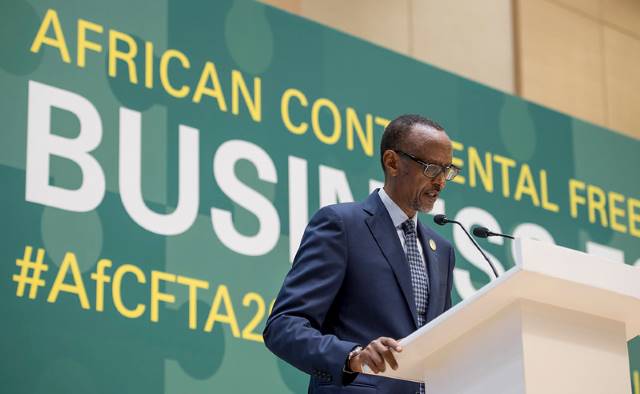The African Continental Free Trade Area (AfCFTA) is poised to redefine the future of intra-African commerce. With 1.4 billion people and a combined GDP exceeding US$3.4 trillion, AfCFTA is the world’s largest free trade zone by membership — and a powerful platform for businesses ready to trade smarter across Africa.
But success in this evolving market isn’t automatic. It requires navigating customs harmonisation, shifting regulatory frameworks, and identifying sector-specific reforms. For companies seeking an efficient and reliable path through this complexity, platforms like Hi-Fella offer essential trade intelligence, verified supplier-buyer networks, and real-time data built for the continent’s transformation.
The Current Landscape of AfCFTA Implementation and 2025 Milestones

Since AfCFTA’s launch in January 2021, progress has accelerated:
- As of 2024, 47 out of 54 AU member states have ratified the agreement.
- Protocols on trade in goods, trade in services, and dispute resolution mechanisms are in advanced operational stages.
- The AfCFTA Guided Trade Initiative has enabled early-stage trade between pilot countries like Ghana, Egypt, Rwanda, and Kenya.
Looking ahead to 2025, key milestones include:
- Operationalisation of the Pan-African Payment and Settlement System (PAPSS) for real-time cross-border transactions in local currencies.
- Full implementation of digital customs and tariff schedules for all ratifying countries.
- Expanded integration of the AfCFTA Investment Protocol to attract cross-border capital and secure trade corridor infrastructure.
These developments signal a pivotal shift toward a more integrated, rules-based African trade environment — and a compelling reason to prepare now.
Navigating Customs Harmonisation and Non-Tariff Barriers Across Africa
One of AfCFTA’s core objectives is to harmonise and digitise customs procedures across Africa — an ambitious task given the continent’s diverse border regimes and infrastructure gaps.
Promising progress includes:
- The launch of the Continental Customs Transit Guarantee Scheme, enabling goods to move across multiple borders under a unified bond.
- E-certification systems for origin documentation, adopted by countries like Ghana and Rwanda.
- Efforts to synchronise product classification codes, streamline inspection, and facilitate joint border posts.
However, non-tariff barriers (NTBs) remain a hurdle. These include:
- Prolonged border delays due to poor infrastructure or inconsistent interpretation of regulations.
- Lack of interoperability between national customs systems.
- Limited capacity in last-mile logistics and cold chain infrastructure.
To address this, Kenya’s National Trade Facilitation Committee and Rwanda’s Electronic Single Window are streamlining clearance processes, while the AfCFTA Secretariat supports digital border pilots aimed at reducing customs friction across regions.
Sector-Specific Regulatory Shifts Driving Trade Opportunities
AfCFTA is not just a tariff agenda — it is a platform for industrialisation and sector growth, especially in:
- Agro-processing: Regulatory harmonisation in SPS standards and packaging is helping producers scale regionally.
- Pharmaceuticals: Afreximbank is funding local manufacturing hubs, while the African Medicines Agency (AMA) works to unify drug approval processes.
- Automotive: Countries like Ghana and South Africa are developing continental rules for assembly, parts origin, and investment incentives.
- Digital services: Startups benefit from regional data policy alignment, with Kenya and Nigeria leading in fintech and mobile health compliance frameworks.
Efforts from the African Union, UNCTAD, and development banks are also supporting e-logistics, investment code harmonisation, and cross-border SME financing — helping businesses scale within an increasingly coordinated policy environment.
Global Business Strategies to Leverage AfCFTA in 2025
Multinationals and African enterprises are already adjusting to the opportunity AfCFTA represents:
MTN and Airtel: Cross-Market Integration through Unified Frameworks
MTN and Airtel are leveraging the African Continental Free Trade Area (AfCFTA) to streamline operations across Anglophone and Francophone countries. By working within unified licensing and tax frameworks, both telecom giants aim to reduce regulatory friction and improve service consistency across borders. This strategy helps them expand their footprint efficiently in multiple regions without duplicating compliance efforts.
This harmonized approach allows for better network interoperability, reduced operating costs, and simplified cross-border service delivery. It also strengthens their competitive positioning by enabling seamless roaming, standardized offerings, and faster market entry in newly liberalized zones under AfCFTA.
Apple Suppliers and Chinese Firms: Building Logistics Hubs in Africa
Apple suppliers and several Chinese manufacturing and logistics firms are capitalizing on AfCFTA’s infrastructure incentives by setting up logistics hubs in Nairobi and Lagos. These hubs are strategically aligned with emerging pan-African trade zones and serve as distribution anchors for intra-African trade. The aim is to support growing consumer markets and regional production networks.
This investment also reflects the shift in global supply chains, with firms looking for diversified and scalable routes within Africa. With AfCFTA reducing internal trade barriers, these hubs will benefit from smoother customs processes, faster transit times, and improved access to raw materials and labor across the continent.
SMEs in Ghana and Tunisia: Early Movers in Agro-Export Expansion
Small and medium-sized enterprises (SMEs) in Ghana and Tunisia are taking early advantage of AfCFTA’s trade corridors to boost their agro-export capabilities. These businesses are tapping into Southern and East African markets by leveraging streamlined logistics and reduced tariffs. This approach allows them to diversify revenue streams and reduce dependence on traditional, often saturated, export destinations.
The movement of goods such as cocoa, fruits, and processed foods is becoming more cost-efficient due to simplified documentation and shared standards under AfCFTA. As a result, SMEs are better positioned to scale operations, reach new customers, and attract international partnerships focused on sustainable agriculture and regional integration.
The EU and UAE: Strategic Investment in Special Economic Zon
The European Union and the United Arab Emirates are investing heavily in AfCFTA-ready special economic zones (SEZs) across Africa. These zones offer regulatory fast-tracks for manufacturing, warehousing, and cross-border distribution, designed to attract both local and foreign investors. They are strategically located near key ports and transport corridors to facilitate trade flow.
These investments signal a long-term commitment to Africa’s economic integration. By aligning SEZs with AfCFTA’s liberalized trade policies, the EU and UAE aim to create high-efficiency, export-oriented hubs that support regional development, industrialization, and global supply chain participation.
Across the board, winning strategies include:
- Multi-country regulatory alignment from day one
- Pan-African sourcing partnerships to optimize cost and market access
- Adoption of AI-driven trade forecasting tools to plan around commodity shifts and route risks
Hi-Fella supports these strategies with actionable data — helping businesses move confidently across complex, fast-evolving African trade environments.
Join Hi-Fella Today!
Hi-Fella is the global trade platform designed for a connected and integrated Africa. Whether you’re a regional SME entering new African markets or a global brand aligning to AfCFTA protocols, Hi-Fella empowers your journey.
With Hi-Fella, you gain access to:
- Verified supplier and buyer networks across Africa’s key growth corridors
- Up-to-date regulatory intelligence from AfCFTA member states
- Market insights and sourcing dashboards to navigate sector-specific shifts
- Digital showcases and compliance tools to simplify multi-country engagement
As AfCFTA advances toward full implementation in 2025, don’t just observe — engage with confidence.








